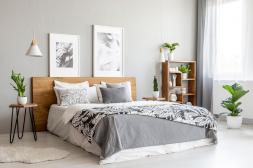The Impact of Color Temperature on Mood and Functionality in Different Rooms

Choosing the right lighting for your home goes beyond simply selecting brightness. The color temperature of your lights plays a crucial role in shaping the mood and functionality of each room. Understanding how different color temperatures affect ambiance can help you create spaces that feel comfortable, energizing, or relaxing depending on their purpose.
What is Color Temperature?
Color temperature is measured in kelvins (K) and describes the appearance of light emitted by a bulb. It ranges from warm tones (lower kelvin values) to cool tones (higher kelvin values). Warm light typically has a yellowish hue, while cool light tends to be bluish-white. Choosing the right color temperature can influence how colors appear and how people feel in a room.
Warm Light for Cozy and Relaxing Spaces
Warm white lights usually range from 2700K to 3000K. This softer, yellowish glow is perfect for living rooms, bedrooms, and dining areas where relaxation and comfort are priorities. Warm lighting creates an inviting atmosphere that encourages winding down after a long day or enjoying intimate gatherings with family and friends.
Neutral White for Workspaces
Neutral white lighting falls between 3500K to 4100K and offers balanced brightness without being too harsh or too soft. This color temperature is ideal for kitchens, home offices, or bathrooms where clarity is important but you also want some warmth to avoid feeling sterile. Neutral white helps improve focus without causing eye strain during tasks like cooking or reading.
Cool Light for Energizing Environments
Cool white lights typically range from 5000K to 6500K and emit a crisp bluish tone that mimics daylight. Such lighting works well in areas where alertness and productivity are key—like garages, laundry rooms, or study areas. Cool light can boost concentration but may feel too intense if used excessively in living spaces designed for relaxation.
Tips for Selecting Color Temperature Throughout Your Home
When choosing bulbs, consider the function of each room first before picking color temperature. Layering different types of lighting—ambient, task, accent—with complementary temperatures can enhance both mood and usability. Additionally, using dimmable fixtures allows you to adjust brightness levels according to time of day or activity.
Understanding color temperature empowers you to tailor your home’s lighting environment with intention—enhancing comfort in cozy corners while promoting focus where needed most. By thoughtfully selecting the appropriate hues throughout your living spaces, you’ll create an atmosphere that supports both well-being and daily tasks seamlessly.
This text was generated using a large language model, and select text has been reviewed and moderated for purposes such as readability.


